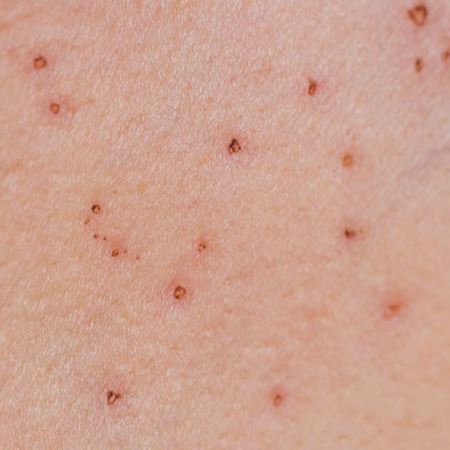CO2 Laser
Carbon dioxide (CO2) lasers are gas-based, infrared-emitting devices used to destroy dermatological lesions.
CO2 Laser - Surgical Procedures
The surgical handpiece is used to precisely and effectively vaporise various benign dermatological lesions.
Indications: common wart, milia, seborrheic wart/keratoses, molluscum pendulum, syringoma, hidradenoma, condyloma, papilloma, etc.

Fractional CO2 laser
CO2 lasers have been used for more than 25 years in surgical procedures, aesthetic and dermatological treatments: medium and fine wrinkles, scars of various origins, pigmentary disorders and dilated pores. Although very effective in the treatment of scars and facial wrinkles, traditional CO2 lasers involved relatively long periods of social withdrawal. Today, new methods are applied, such as the fractional technique (through the use of a scanning scanner)
The fractionated C02 laser distributes the laser beam into multiple smaller beams, evenly spaced so as to leave gaps of healthy skin from which healing will take place more rapidly. 60% to 85% of the skin is left intact. This new method allows for a very short recovery time compared to previous CO2 laser resurfacing treatments.
The results are usually visible after the first session.
Depending on the patient's requests and their ability to avoid social contact, more or less aggressive fractional CO2 laser treatments can be carried out: 'light' treatments (with a return to work after 3 days, even if it means carrying out 3 or 4 sessions), or more intensive but one-off treatments (with a return to work after approximately one to two weeks).
Indications
- Wrinkles and fine lines
- Actinic elastosis (sagging skin)
- Solar lentigos (age spots)
- Atrophic scars, especially acne scars
- Areas that can be treated by fractional CO2 laser
- Rejuvenation, resurfacing: neck, décolleté, hands
Contraindications
- Known hypersensitivity to light
- Taking medication that increases sensitivity to light
- Use of anti-angiants
- Tanning
- Pregnant and/or breastfeeding women
- History of hypertrophic scarring
Precautions before the fractional CO2 laser session
- In the 3 to 4 weeks prior to the session: the patient should avoid any exposure to the sun, UV and should refrain from using any self-tanning products.
- In the week preceding the laser procedure: use a moisturising cream regularly to prepare the skin.
- In case of known herpes labialis: prescription of an anti-herpes medication which will be started in the 2 to 4 days preceding the CO2 procedure.
- On the day of the fractional CO2 laser session: do not wear make-up, apply an anaesthetic cream to the area to be treated.
How many laser sessions will be necessary?
The treatment involves 1 to 4 sessions spaced 6 to 8 weeks apart and the results are visible in 3 to 4 weeks.
Possible side effects
Following laser ablation, normal reactions are observed (redness, swelling, etc.).
Possible complications:
- Herpetic infections
- Bacterial infections
- Skin erythema
- Hyperpigmentation
- Scars
Strict sun protection should be maintained for more than a month: sun block cream and sun avoidance.




